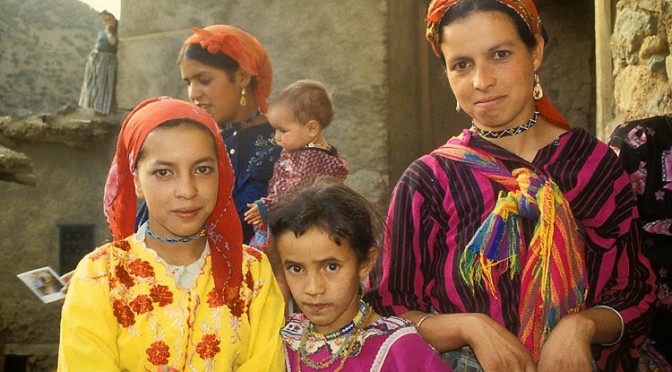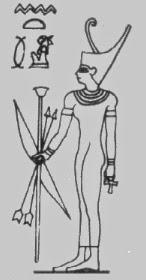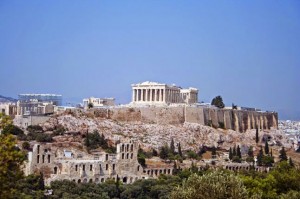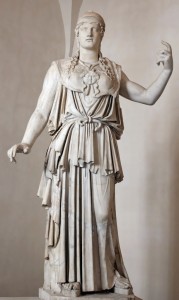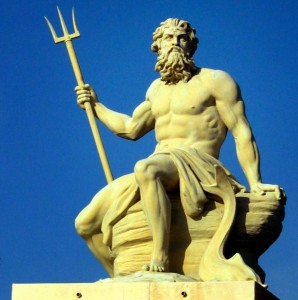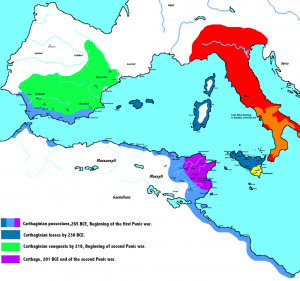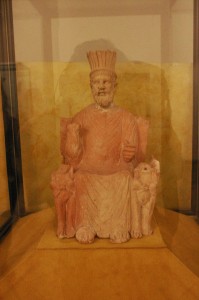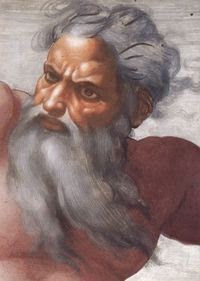A few months ago I started my mythological world tour with the premise that fantasy, specifically epic fantasy, was usually fairly Euro-centric. The basic premise was to start pointing at different regions of the world, selecting a handful of interesting stories, and wetting your appetite for the concept of possibly using these regions in your own writing. It’s gone well – I’ve covered Asia, Australia, and Egypt. But then I ran into a really strange speed-bump.

The region around Egypt has several other cultures that have existed there, some of them absorbed into what we’ll refer to as the “Crusade belt” and thus folded into the greater fantasy genre already. But others are a little more confusing and a little more subtle. For instance, the kingdom of Kush to the south of Egypt was for a very long time considered to actually just be a subset of Egypt. Only in recent times has Kush been considered by some scholars to be a distinct group of people who had a culture sufficiently different enough to be worth study. This means that even if I wanted to talk about Kush’s culture, there’s no real information for me to use except: “it’s, kind of like Egypt, but not.” On the other hand, another culture existed to the west of Egypt in what is now modern day Libya known by many as the Berbers but referring to themselves as the Amazigh. And the story of the Amazigh is… complicated.

Honestly, how the fuck do I explain the Amazigh?
I considered skipping the Amazigh and declaring that Egypt was enough to cover what could be called “North Africa”. But looking into them made me realize just how stupid the Euro-centric model in epic fantasy actually is. Over the course of thousands of years, the Amazigh were kind of a melting pot and test-bed of cultures from all around their corner of the Mediterranean. Not sharing the background of how these cultures intermixed would be allowing the process to be ignored and let people miss the fact that all of these cultures are interconnected on some level.

So today I’m going to do something a little different and discuss more about how things can be the same, rather than different…
The Amazigh: Connecting the Dots
The Amazigh people are a rather extensive collection of cultures stretching across the North coast of Africa. To describe their culture is a bit difficult in clear terms because of the fact they were always in contact with other cultures and have a rich history of interaction with people from around the sea. The only real clear analogy to be made would be to say that the Amazigh were kind of like the Beatles.
That’s a bit confusing at first, but the reason I say this is because the Beatles are a band that formed and thrived off of the act of influencing and being influenced by other bands. The Beatles are the band responsible for the songs performed by the most cover artists in history, yet they were also always being influenced by outside forces. Their original act was a variation of Rock & Roll, which was derived from black music genres of the early 20th century itself. Meanwhile their later work had influences from around the world as they began a world fusion. This influence from the outside is often blamed for the eventual end of the group as certain individuals were thought to hold too much influence on specific band members.
The Amazigh were much the same. Due to their coastal position and exposure to anyone who happened to travel the seas, they were often in close contact with many cultures. Because of this, while most people reading this may not have ever heard of the Amazigh, you’re likely still more familiar with their culture than you’re aware. For instance, to get the most obvious one out of the way, let’s begin with…
The Egyptians
The Amazigh and the Egyptians were neighbors from the start and the two of them shared so many commonalities that many scholars today aren’t quite sure where some parts originated. Amun, the solar deity most famous today for having been merged with Ra as Amun-Ra, is argued by some scholars to either have originated with the Amazigh or actually have been the most important deity of the Amazigh. Not all scholars agree on this fact, however, and some discount Amun’s worship in the Amazigh regions all together. But there are other gods, important gods (especially if you paid attention to my last entry) that Egypt actually credited the Amazigh for early on.
Neith, one of the goddesses of war, was said by the Egyptians to have traveled from a region that is today known as Libya before establishing her temple in the city of Sais. This means that, in the eyes of the Egyptians, Neith was a Amazigh goddess originally before migrating eastward to the Nile Delta. Considering how many commonalities she shared with other war goddesses, the question becomes whether Neith inspired other goddesses in Egyptian mythology or if Egyptian goddesses inspired Neith. This is a common theme in the relationship between these cultures.
Another example comes with gods such as Isis, Set, and Osiris. As some of you may remember, these were three key figures in the story of Horus. However, worship of Set and Isis was so specific that it changed people’s diet in efforts to avoid angering their deities. A Amazigh worshipper of Set would never touch pork while a worshipper of Isis would likely not eat beef. Scholars tend to associate these two deities with the Egyptians, but the question becomes: why would the Amazigh take this worship so seriously if they simply adopted the figures? And then you have the issue of Osiris.
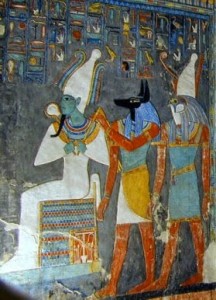
Osiris, a major deity of Egyptian mythology, is said by some to actually have signs that he originated as an Amazigh god. This wouldn’t be too confusing except both Amazigh and Egyptians agree that Isis, Set, and Osiris are all siblings. So if the three of them are supposed to be related it would go to assume that they came from the same country. But which one? No one’s really sure anymore!
Fortunately, it’s much clearer regarding…
The Greeks
Now this one is where some stuff starts blowing your mind. The ancient Libyans, the Amazigh, were a sea-faring people who happened to do a lot of their business out on the Mediterranean and could be found along many islands there-in. Along the way they happened to run across a group of people known as something called the…Greeks(?).
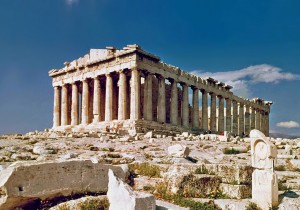
So the Amazigh and Greeks happened to live side-by-side on these island nations for some time and the Greeks who lived there would tend to pick up Amazigh customs and knowledge from their Libyan friends. They erected temples to Amon, the Libyan variant of Amun, and began to identify him as either comparable to Zeus or another face of Zeus. In fact, when Alexander the Great decided to have someone declare him as the son of Zeus (it was a thing back then to make sure people thought you were divine), he had Libyan priests of a temple of Amon do it!
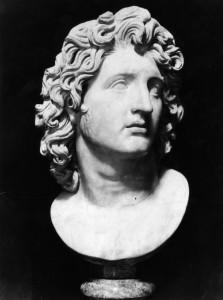
But that isn’t where this gets freaky for people who know anything about the Greeks. Where it gets freaky is this: Have you heard of the city of Athens?
Athens, a Greek city-state that has been around since ancient times, was one of the most influential and still one of the most recognizable today. Athens was named for Athena, goddess of wisdom… who was totally Libyan in origin. That’s right, one of the archetypal Greek goddesses wasn’t even Greek! In fact, the ancient scholars (the actual Greek scholars) said that not only did she originate from Libya, she was still dressed like a Libyan in most depictions of her.
Now, one of the major differences between Amazigh Athena and Greek Athena was her parentage. In the Greek myths, Athena’s father was Zeus, king of the gods (and sometimes other face of Amon). In the Amazigh myths, Athena was the daughter of one of the Amazigh gods – Poseidon.
Yeah, depending on who you ask, Poseidon was a Amazigh god first, too! And it makes a lot of sense considering the Amazigh were really big into sea travel and having a god of the sea was somewhat essential to not crapping yourself whenever the waves got rough. But the point remains that one culture happens to have a lot of blurred lines that crossed over into others in such a way that we know about them without actually knowing about them.
In fact, what has got to be the biggest blurred line in all of mythology is what happens when you take a look at the relationship between the Amazigh and…
The Phoenicians
The Phoenicians were a Semitic tribe from the region today known as Lebanon. Being another sea faring culture like the Greeks and the Amazigh, the Phoenicians eventually founded a rather large nation known by the name of Carthage, stretching along major coastlines for some distance and practically absorbing the Amazigh to form what became known as the “Punic” culture.
Like many other cultures before, the Carthaginians adopted local Amazigh deities and customs as they intermixed. But, where as most cultures had the lines blur and entire gods adopted, the Phoenicians preferred to keep their gods and merely adopt aspects of the Amazigh gods into them. One example was that of Ba’al, pronounced like the thing you’d throw at someone, who was one of the supreme Semitic deities for a period of time.
Ba’al, like Zeus and Ra, was merged by the Punic culture to form Ba’al Amon. Ba’al Amon, aside from sounding like a digimon, was the supreme deity of Carthage and was often the form seen in other places. Any major reference to Ba’al that isn’t using the term as a foreign sounding word for “powerful entity” is generally referring to the version that was known as Ba’al Amon.
Ba’al Amon is often depicted as an older man with waving and curling hair who may sometimes have ram horns. As a deity on his own, he isn’t too interesting as he’s just a typical fertility god ensuring good crops in exchange for ritual offerings. However, Biblical scholars may recognize that certain writings actually identify “Ba’al” as an alternative name for the Semitic god “El”. Down the line, El, a major creator god for the Semitic tribes, began to be identified with a war god originating in the region known as Israel – Yahweh.
So, follow me here, Ba’al Amon was the older bearded deity who would grant his followers a fertile land in exchange for ritual offerings and, according to some tribes, was also the creator of the world. Clearly, one of these is a cover of the other. But, like with the Beatles…
https://youtu.be/2zMG15f-A4s
It can get a little hard to see which direction the influences flowed.
(I write books. Someday, in the far future, I hope someone’s fan fiction of me is considered an ancient religion too. Oh, and trivia time, that song above is the most covered song ever… crazy, right?)


